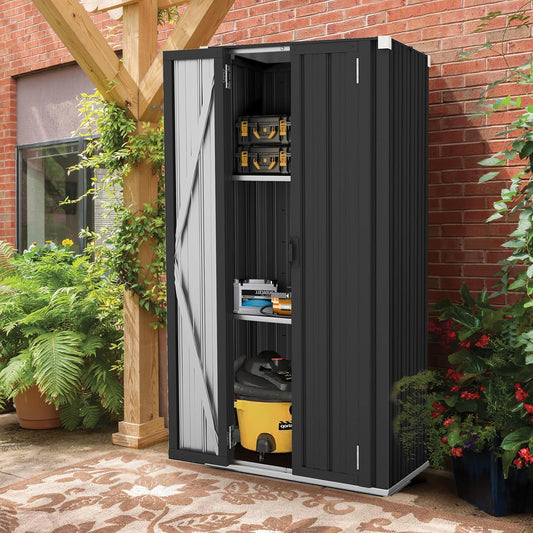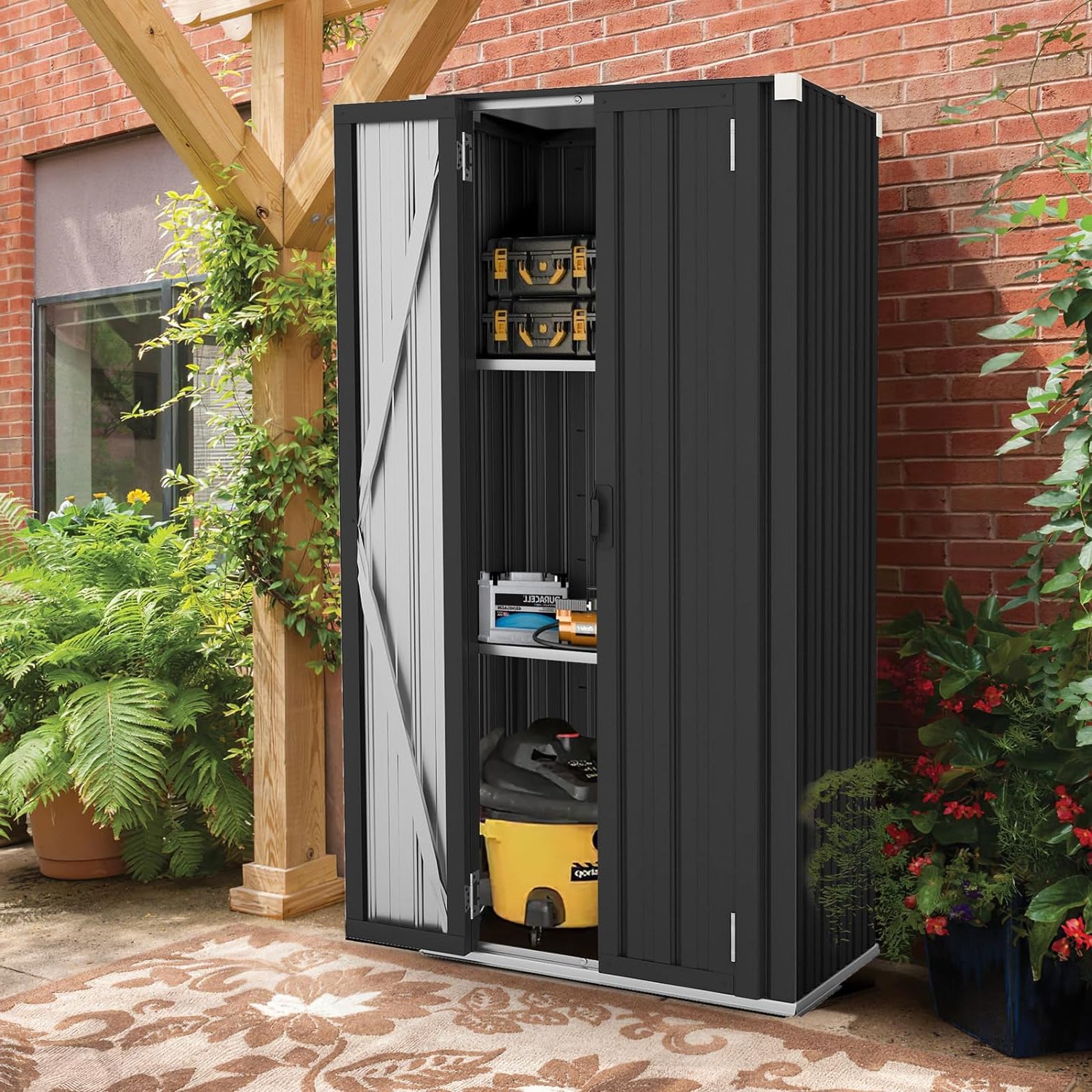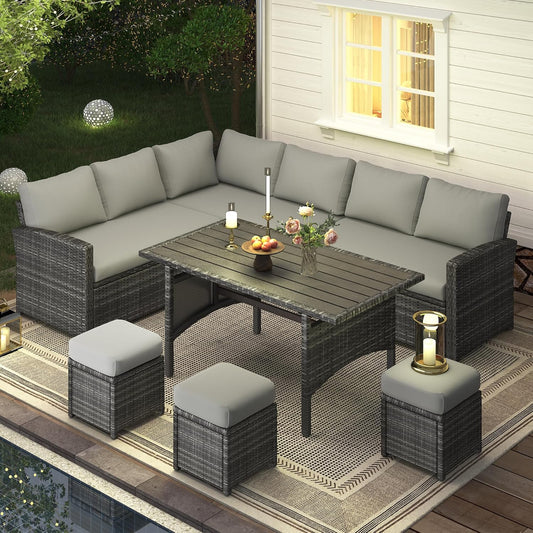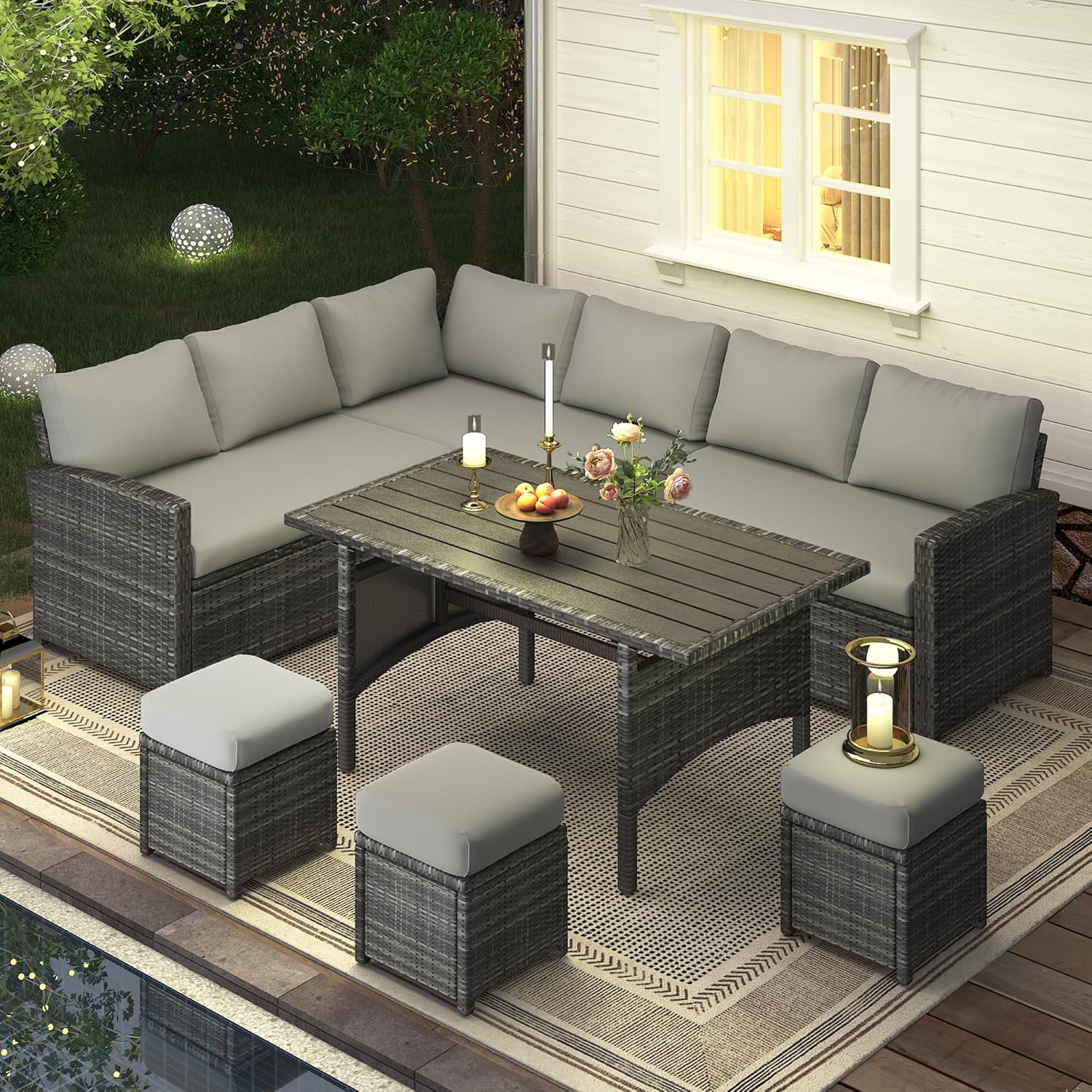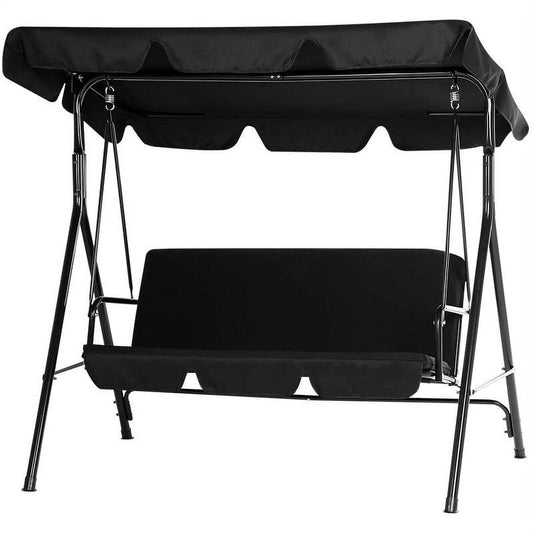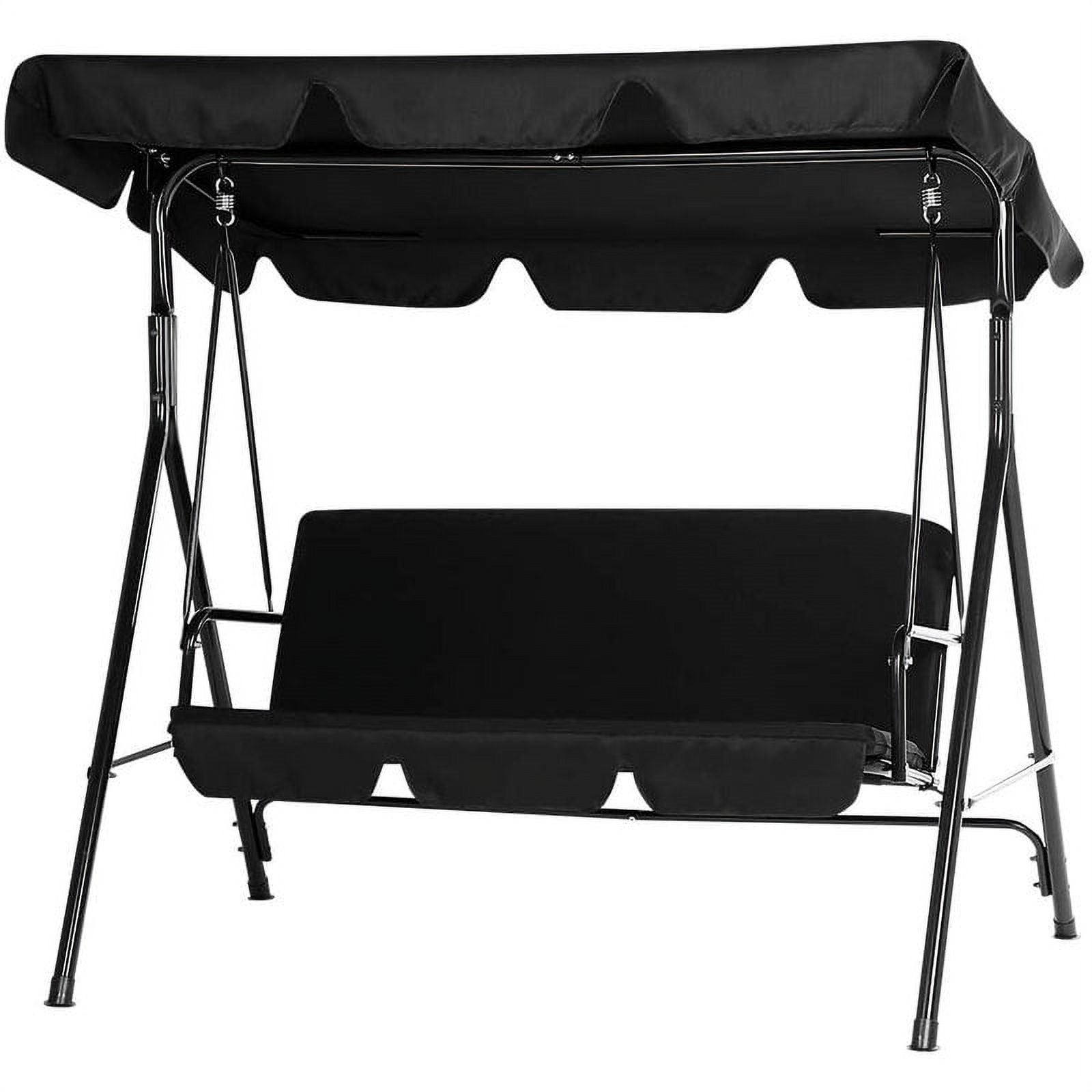Forget that dreamy, Instagram-ready look for a second. Let's talk about the reality of outdoor wood furniture. You bought it for those perfect summer nights, right? But what you actually got was a high-maintenance relationship.
It starts with a few dark spots. Then a weird, musty smell. Before you know it, your beautiful teak bench looks like it's starring in a zombie apocalypse. Sun, rain, and mildew are basically the three villains in the horror story of your patio.
But what if you could give your furniture an invisible shield? A secret weapon that lets the natural grain shine through but secretly fights off moisture and mold all year long? No, it's not magic. It's a clear mildew sealant for wooden outdoor furniture.
This isn't about another chore. It's about spending less time scrubbing and more time actually enjoying your space. Keep reading, because this tiny step is the ultimate hack for lazy landscapers and busy homeowners who just want their stuff to look good.
Why Mold Is the “Silent Killer” of Outdoor Wooden Furniture
When you carefully select solid wood furniture for your patio or garden, you may think its biggest enemies are direct sunlight or heavy rain. In reality, the most destructive threat is far less obvious — mold. To understand how to protect your furniture, you first need to know why mold thrives so easily on wood.
1. The Science: Why Wood “Breathes” — and Why That’s a Problem
Wood is a natural cellulose material with countless microscopic pores. This porous structure allows it to “breathe” and absorb moisture from the air. While this gives wood its warm, tactile feel, it also creates the perfect breeding ground for mold:
- Constant moisture supply: When humidity rises above 60%, wood acts like a sponge, storing water for mold spores to feed on.
- Built-in nutrition: Wood’s cellulose fibers are an organic food source that mold loves.
- In other words, untreated outdoor wood is essentially a self-sustaining mold incubator.
2. High-Risk Environments: More Common Than You Think
Mold isn’t limited to swamps or tropical climates — it thrives in many places homeowners wouldn’t expect:
- Humid regions: States like Florida and Louisiana along the Gulf Coast, as well as Washington and Oregon in the Pacific Northwest, face year-round mold pressure.
- Micro-environment traps: Even in drier regions like California, furniture placed in shaded corners, against walls, or near swimming pools can be exposed to localized high humidity with poor airflow.
- Seasonal challenges: In the Northeast, summer brings hot, muggy air while winter snowmelt soaks wooden decks and furniture. This constant wet–dry cycle causes cracks, which become perfect hiding spots for mold colonies.
3. The Consequences: From Stains to Structural Failure
Ignoring mold damage comes at a steep cost:
- Aesthetic loss: Black, green, or white patches stain the surface and discolor the wood.
- Material degradation: Mold secretes organic acids that break down fibers, leaving the surface rough, chalky, and brittle.
- Structural collapse: Once internal fibers are compromised, strength and flexibility decline rapidly, leading to warping, splitting, and a total loss of structural integrity.
A real-world case:
One of our clients in Houston purchased a premium teak dining table, assuming the wood’s natural oils would protect it from decay. Without applying any sealant, the table endured a particularly wet spring. Within months, dark mold spots appeared around the joints, and repeated swelling and shrinking of the wood loosened the frame. Repairing the damage cost far more than a single coat of professional-grade mildew sealant would have.

Mold on Outdoor Wooden Furniture
💡 Core Takeaway
Protecting outdoor wooden furniture isn’t about simply “painting a surface.” The real key is moisture management — preventing water from penetrating wood pores. A clear mildew-resistant sealant creates a protective barrier that blocks the moisture mold depends on, while preserving the wood’s natural beauty. Think of it as insurance for the long-term value and durability of your wooden outdoor furniture.And if you’re planning to upgrade your space, explore our wood and iron Patio Furniture Sets designed for both durability and timeless style.
What Is a Clear Mildew Sealant?
Think of a clear mildew sealant as the invisible armor for your beloved wooden outdoor furniture.
It’s not paint. It’s not a stain. Instead, it’s a high-tech transparent coating designed with one mission: to protect wood from moisture, mold, and sun damage without changing its natural beauty.
What Exactly Is It?
A clear mildew sealant is a liquid protector, typically made with advanced resins (such as acrylic or polyurethane), waterproofing agents, and anti-mold additives. Once applied, it doesn’t just sit on the surface—it penetrates deep into the wood fibers, wrapping each pore in a protective barrier.
The result? A shield you can’t see, but one that keeps your furniture safe from the elements while allowing you to enjoy the wood’s natural grain, warm tones, and organic texture.
How Is It Different from Paint or Stain?
Choosing the wrong product can lead to completely different results. Here’s the breakdown:
Paint
- How it works: Like a heavy coat, it covers the entire surface in an opaque film.
- Effect: Completely hides the wood’s grain and natural color. Cracks and peeling are common over time, making repairs difficult.
- Best for: People who want to change the look entirely with a solid color.
Recommended brand: Behr Premium Plus Exterior Paint – reliable coverage and a wide color palette.
Stain
- How it works: Penetrates the wood slightly while adding pigments that alter the wood’s color.
- Effect: Can darken or change tones (e.g., turning pine into a walnut look), but offers limited protection against mold and moisture. Requires frequent maintenance.
- Best for: Homeowners who want to enhance or change color while keeping some grain visible.
Recommended brand: Minwax Wood Finish Stain – known for consistent color options and ease of use.
Clear Mildew Sealant
- How it works: Think of it as a “protective serum” that penetrates deep, strengthening the wood from within.
- Effect: Keeps 100% of the natural look. Its priority is performance—waterproofing, mold prevention, UV defense—not decoration.
- Best for: Anyone who loves the authentic wood appearance but needs long-lasting, high-performance protection.
Recommended brand: Thompson’s WaterSeal Clear Wood Protector – a trusted choice for transparent, mildew-resistant sealing.

The Core Benefits of Clear Mildew Sealant
A top-quality clear mildew-resistant sealant doesn’t just stop mold. It’s a complete protection system against the four biggest threats to outdoor wood furniture:
-
Moisture & Water Protection
Forms a hydrophobic barrier that blocks both liquid water and airborne humidity—cutting off mold at its source. -
Mold & Mildew Resistance
Built-in anti-fungal ingredients prevent spores from attaching and spreading, keeping surfaces clean and healthy. -
UV Defense
Like sunscreen for wood, UV absorbers reduce sun damage, preventing fading, discoloration, and surface cracking. -
Anti-Weathering Support
By stabilizing internal moisture, it minimizes swelling, shrinking, and warping caused by seasonal changes—extending the furniture’s structural integrity.
In short: A clear mildew sealant does all the heavy lifting behind the scenes—fighting mold, water, and sun damage—while letting your wood remain the star of the show.
Benefits of Using Clear Mildew Sealant for Outdoor Furniture
Applying a clear mildew sealant to your beloved wooden furniture is far more than a simple maintenance task. It is a crucial investment that enhances the quality and longevity of the furniture from the inside out. Below are the four core benefits it brings:
1. Ultimate Aesthetic Preservation: Keeping the Natural Beauty Untouched
This is the fundamental difference between a sealant and paint or stain. It does not cover or change the natural appearance of the wood with heavy colors.
Effect: It penetrates deeply and forms a completely transparent protective film. This means you can continue to enjoy every unique grain, warm tone, and delicate texture of the wood.
Analogy: It is like applying a high-quality invisible scratch-resistant film on a screen—protection is there, but you see right through it. Your garden style therefore remains in its purest, most natural state.

2. Strong Moisture Resistance and Mold Prevention: Addressing the Pain Point
This is undoubtedly its core value. The sealant cuts off the essential conditions needed for mold to survive from the root.
Moisture resistance principle: It forms a water-repellent barrier inside the wood fibers, effectively blocking both liquid water penetration and airborne moisture absorption. With the wood staying dry, mold loses its breeding ground.
Mold prevention mechanism: High-quality products also contain special anti-mildew components, which actively inhibit the attachment and growth of mold spores, leaving no chance for those annoying black or green spots to appear.
Result: Whether facing long rainy seasons, morning dew, or water splashes from the pool, your furniture can handle it with ease and remain dry and clean.
3. Significantly Extended Lifespan: Protecting Its Structure and Value
Outdoor furniture is not cheap, and protective sealants safeguard your investment in the following ways:
- Preventing structural damage: By stabilizing the internal moisture of the wood, it greatly reduces warping, deformation, and cracking caused by repeated swelling and shrinking.
- Resisting ultraviolet rays: Many advanced sealants contain UV-resistant ingredients, which act like “sunscreen,” slowing down the damage of sunlight, and preventing the surface from becoming gray, rough, and cracked.
- Avoiding decay: By keeping the wood dry continuously, it fundamentally prevents rot caused by long-term dampness.
In the long run: This means that for years, or even more than a decade, you won’t have to spend on costly repairs or replacements.
4. Easy Daily Cleaning: A Time- and Effort-Saving Secret
This is often overlooked but extremely practical. A sealed surface becomes smooth and less likely to attract dirt.
Daily maintenance: Common dust, spilled drinks, and food residues do not easily penetrate into the wood pores. In most cases, just a simple wipe with a damp cloth will restore the furniture’s shine, greatly reducing the frequency and difficulty of deep cleaning.
Analogy: It is like applying a “stain-repellent treatment” to the wood surface, turning maintenance from a tedious chore into something simple and effortless.
In summary, applying a clear mildew sealant takes only a few minutes, yet the benefit is years of peace of mind and enjoyment. It transforms you from passively “worrying about maintenance year after year” into actively “enjoying outdoor life with ease.” This invisible armor protects not only the beauty of your furniture but also every beautiful moment you spend in your garden.

How to Apply Clear Mildew Sealant : Step-by-Step Guide
Putting this layer of ‘invisible armor’ on your furniture is not difficult, but careful preparation and the correct application method are the keys to ensuring protection that lasts for years. If you’re wondering how to remove mold from wood furniture before applying the sealant, follow these steps strictly:

Step 1: Deep Cleaning (Critical!)
Purpose: Remove all obstacles that would prevent the sealant from penetrating—such as dirt, old coatings, and mildew itself. The sealant cannot effectively adhere to a dirty surface.
Instructions:
- Dust removal: Use a soft brush or dry cloth to clear away all dust, pollen, and debris.
- Cleaning: Use a specialized wood cleaner or mild soapy water (e.g., dish soap diluted in water). Scrub with a brush or rough cloth, paying special attention to joints and corners.
- Mildew removal: If mildew spots are present, use a wood mildew remover or a bleach solution diluted at a 1:3 ratio. Apply and let sit for 10–15 minutes so the agent fully kills the mildew roots, then rinse thoroughly with clean water.
- Rinse & dry: Rinse away all chemical residues with clean water, then allow the furniture to dry completely in sunlight for 24–48 hours. The wood must be fully dry before moving to the next step.

Step 2: Fine Sanding (Improve Adhesion)
Purpose: Open the pores of the wood surface and remove raised fibers caused by sun and rain, creating perfect conditions for sealant penetration.
Instructions:
- Choose sandpaper: Use medium-grit sandpaper (120–150 grit). Too coarse will leave scratches; too fine will be ineffective.
- Sanding direction: Always sand along the grain, never in circles, to avoid unsightly marks.
- Dust removal: After sanding, use a vacuum, tack cloth, or slightly damp cloth to remove all sanding dust. This is often overlooked but critical—dust mixed into the sealant will ruin the smoothness.

Step 3: Choose the Perfect Timing (Weather Decides Success or Failure)
Purpose: Ensure the sealant has an ideal environment to cure and form a protective film.
Instructions:
- Ideal weather: Choose a sunny, dry day with temperatures between 10°C–32°C (50°F–90°F), and humidity below 70%.
- Check forecast: Ensure at least 48 hours of clear weather after application. The sealant needs time to cure in a completely dry state. Night dew or sudden rain can completely ruin the results.

Step 4: Application (Evenness is Key)
Purpose: Form a continuous, uniform, and evenly thick protective layer.
Instructions:
- Stirring: After opening the can, stir the product slowly and thoroughly with a stick. Do not shake vigorously to avoid bubbles.
- Tool choice: Use a high-quality synthetic brush, roller, or sprayer. Brushes provide the best control and penetration, especially on textured wood; sprayers are best for large flat surfaces (e.g., decks).
- Brushing technique: Apply a thin, even coat along the grain. Avoid applying too thickly, which can cause runs or sags and uneven drying. Cover all surfaces, including end grain, joints, and undersides—these areas absorb the most moisture.
Step 5: Apply a Second Coat (The Secret to Lasting Protection)
Purpose: The first coat penetrates; the second builds. Two layers provide longer-lasting, more complete defense.
Instructions:
- Follow the recoat time specified on the product label (usually 2–4 hours). Test by touching the surface—it should feel dry (not sticky) before recoating.
- Apply the second coat the same way: thin and even.
Step 6: Full Curing (The Final Patience Test)
Purpose: Allow the sealant to complete its chemical reaction and reach maximum strength.
Instructions:
Do not use the furniture until the sealant has fully cured. The surface may feel dry in a few hours, but to reach full hardness and withstand rain and daily use, it usually takes 24–72 hours (always check your product’s specific instructions).
During this period, protect the furniture from rain, dew, and pets.
Pro Tip:
After application, pour any leftover sealant into a small glass jar and seal tightly. This reduces air exposure inside the original can, preventing the product from curing in storage, and makes it easier for future touch-ups. Want to see this hack in action? Check out this quick video for a visual guide!
Top 5 Next-Level Tips for Mold Prevention
Applying a sealant is your main weapon, but winning the war against mold is about the smart, daily details. Here are the unspoken tricks the pros use.
1. The Cleaning Power Move: Ditch the Plain Water
The Problem: Water just pushes dirt and oils around, creating a pasty mess that traps moisture.
The Solutions:
- The Daily Driver: A 1:1 solution of white vinegar and warm water. It's a natural disinfectant that kills mold spores without nasty chemical residues.
- For the Tough Stuff: Use oxygenated bleach (OxiClean). It's gentler than chlorine bleach, won't gray your wood, and obliterates organic stains. Scrub it into mildew spots with a stiff brush, let it sit for 10 minutes, then rinse.
- Pro Tip: After washing, use a can of compressed air (like for cleaning electronics) to blast water out of joints and crevices. This prevents hidden mold colonies from ever starting.
2. The Cover-Up Truth: Your Tarp is Probably Hurting
- The Problem: Plastic tarps trap evaporating moisture, creating a sauna effect that's worse than no cover at all.
- The Fix: Only use covers labeled "Breathable" AND "Waterproof." This material blocks rain while letting humidity escape.
- Next-Level Move: Before covering, toss a few dry kitchen towels or a small silica gel dehumidifier bag on the seats and tabletop. They act as tiny moisture cops, actively absorbing trapped dampness.
3. Lift It Up: Break Ground Contact
The Why: Constant contact with a damp deck or patio is a fast track for rot to start in the legs.
The How-To:
- The Upgrade: Install adjustable furniture levelers/feet. They provide a waterproof barrier and stabilize furniture on uneven surfaces.
- The Zero-Cost Hack: After a rain or watering the plants, prop the legs on a couple of wine corks or flat stones. Instant airflow, zero dollars.
4. The Annual "Patch Job"
- When: Right before your worst weather season hits (e.g., fall rains, winter snow).
- The Test: Do the "water bead test." Sprinkle water on an inconspicuous spot. If it soaks in or spreads out instead of beading up, it's time for a refresh.
- The Fix: No need for a full recoat. Lightly sand the worn area, dust thoroughly, and use a small artist's brush for a precise, spot-on application. It saves you time and product.
5. Engineer Your Environment
- The Physical Fix: If your furniture is stuck in a damp, dark corner, prune back surrounding vegetation. Increasing sunlight and airflow changes the entire microclimate.
- The Chemical Fix: For a covered porch or balcony, place a small moisture-absorbing tub (like DampRid). They're inexpensive and silently pull humidity from the entire area.
The Bottom Line: True protection is a strategy. Master the combo of Smart Cleaning + Breathable Covers + Elevation + Annual Check-Ups + Environmental Control. This multi-layered defense makes it incredibly hard for mold to get a foothold. Remember, it's not a chore—it's a game of humidity management.

Conclusion
Ultimately, protecting your outdoor wood furniture from mold isn’t just an optional chore—it’s the most important step you can take to extend its life and preserve its beauty. A quality clear mildew sealant offers the best of both worlds: it forms an invisible shield that fights off moisture, UV damage, and mold, while honestly highlighting the wood’s natural grain and character.
If you ever face the challenge of figuring out how to remove mold from wood furniture, sealing afterward becomes even more crucial to prevent it from coming back. Don’t wait until you see black spots or feel the surface turn rough. Take action now by sealing and maintaining your furniture proactively. A small effort today will reward you with a timeless, welcoming outdoor space for many seasons to come.













